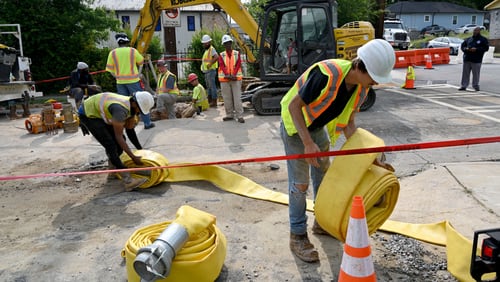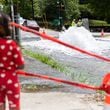Q: I am heartbroken; I think I’ve killed my huge oakleaf hydrangea. Two months ago, we had two pines removed. I moved a good bit of the stump grindings to fill some holes in the island that is also home to mature azaleas, a self-seeded dogwood, and my huge hydrangea. It got a bit soggy after the recent rain. Should I cut back the dead limbs and hope it comes back or dig it out and replant elsewhere? Debbie Miller, Northlake
A: Soggy soil and oakleaf hydrangeas do not mix. Move all the extra mulch on top of the soil to allow it to dry. If you can, use a pitchfork to stab the soil in several places around the plant to aerate the soil. But your intuition may tell you this hydrangea is just too far gone to respond and just needs replacing. Remember that dry soil and soggy soil can each kill a hydrangea, so do a good job finding a nice site for the replacement.
Q: Is the soil dredged from Lake Allatoona safe to use in a vegetable garden? If it is, does it need any extra amendments/specific type of fertilizer? Mark Mendez, email
A: I don’t think I’d use it in my garden, but it could benefit areas where a lawn or a landscape area full of trees, shrubs and flowers is going to be put in. Soil dredged from lakes usually has a lot of fine particles, which when mixed with your garden soil would tend to make it more susceptible to compaction and poor drainage. Beyond that, it’s difficult to know what you’d get. It could be full of gravel, it could be all fine particles, or in each case, it could be contaminated with chemicals. For these reasons, I’d avoid putting it in a vegetable garden because you just don’t know what chemicals are in it. A laboratory could tell you whether each of a hundred chemicals is in a soil sample, but each chemical would have to be tested for individually. All that testing would be expensive. If you want to amend the soil in your garden, use finely ground pine bark or any of the soil amendments sold at nurseries and big-box stores.
Q: I’m looking for a chart that sets out the soil pH that different plants/vegetables prefer. Rita DeCook, email
A: I did a bit of Google searching and found two good resources: Harvest to Table and Grow Great Plants. Harvest to Table has an excellent article about the importance of knowing and adjusting your soil pH at bit.ly/GAph1 (occasionally hard to follow past the ads). Grow Great Plants has a comprehensive chart of the soil pH needed by over 100 flowers and vegetables at bit.ly/GAph2.
Email Walter at georgiagardener@yahoo.com. Listen to his occasional garden comments on “Green and Growing with Ashley Frasca” Saturday mornings on 95.5 WSB. Visit his website, walterreeves.com, or join his Facebook page at bit.ly/georgiagardener for his latest tips.
About the Author
/cloudfront-us-east-1.images.arcpublishing.com/ajc/TREJAYVONJDWJFUYKOG5ZVVJKI.JPG)





